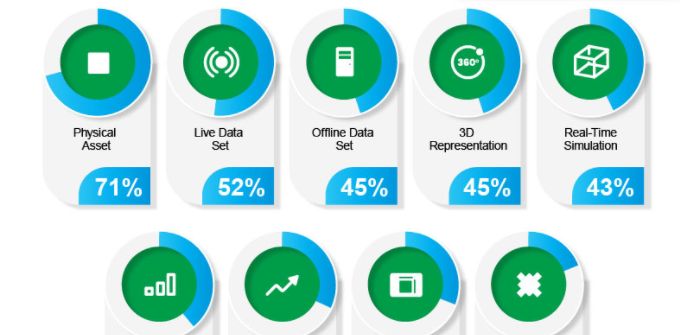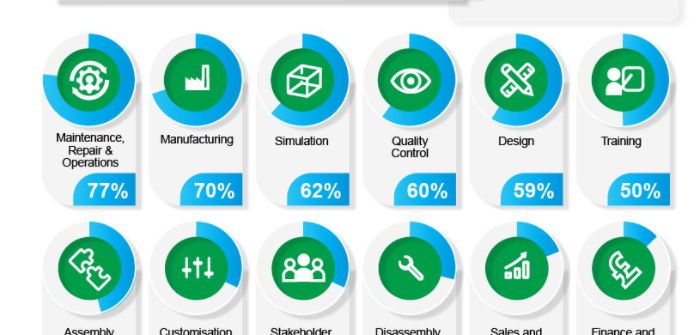New research has found that 77% of engineers surveyed believe that digital twin technology can be of most value during the ‘maintenance, repair and operations’ stage of the product lifecycle.
One of the biggest developments in the world of technology over the last few years has been that of digital twins. A digital twin is a virtual replica of a physical system, process or product, and the technology provides a real-time look at how a physical asset is performing.
Digital twins are already being adopted in industries such as manufacturing, automotive and construction. Consequently, organizations in those industries are using digital twin technology to evaluate the performance of given physical assets and then, identifying where improvements can be made to reach more favourable outcomes for the future.
Digital marketing specialist Reboot Online analyzed the latest findings from research facilities provider Catapult, which surveyed engineers from a range of disciplines to better understand the components they consider most necessary for digital twin technology to function effectively.
Reboot Online engineers consider a ‘physical asset’ the most important component in a digital twin, followed by a ‘live dataset’, then an ‘offline dataset’.
However, with a digital twin being a pairing of the virtual and physical worlds, just 45% of engineers surveyed rated 3D representation as a must-have variable. Less than a third (31%) stated that 2D graphic representation is needed for a digital twin to work properly.
The research showed that maintenance, repair and operations is the stage in the product lifecycle where most engineers believe digital twin technology adds the greatest value. Manufacturing was the next most valuable.
Almost two thirds (62%) of engineers thought digital twin technology can be harnessed during the simulation of a model that predicts the current and future behavior of a given physical asset.
Slightly fewer (60%) felt digital twin technology can be highly practical in quality control testing. Interestingly, 59% considered a digital twin to be impactful in the design phase of a product/system.
Naomi Aharony, managing director of Reboot Online, said, “We are in an era of rapid technological developments. At the forefront of that has been the rise and evolution of digital twins. With the technology having the ability to cover the entire lifecycle of a physical system, process or product, it provides businesses with a powerful analytical tool which can thoroughly assess key performance indicators and provide insights as to where enhancements can be made. In the long run, the lessons and suggestions taken from digital twins will drive opportunities for innovation and growth.”
Credit: www.rebootonline.com



